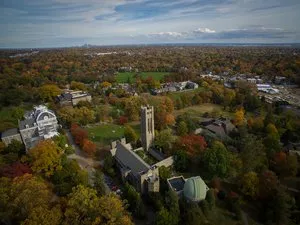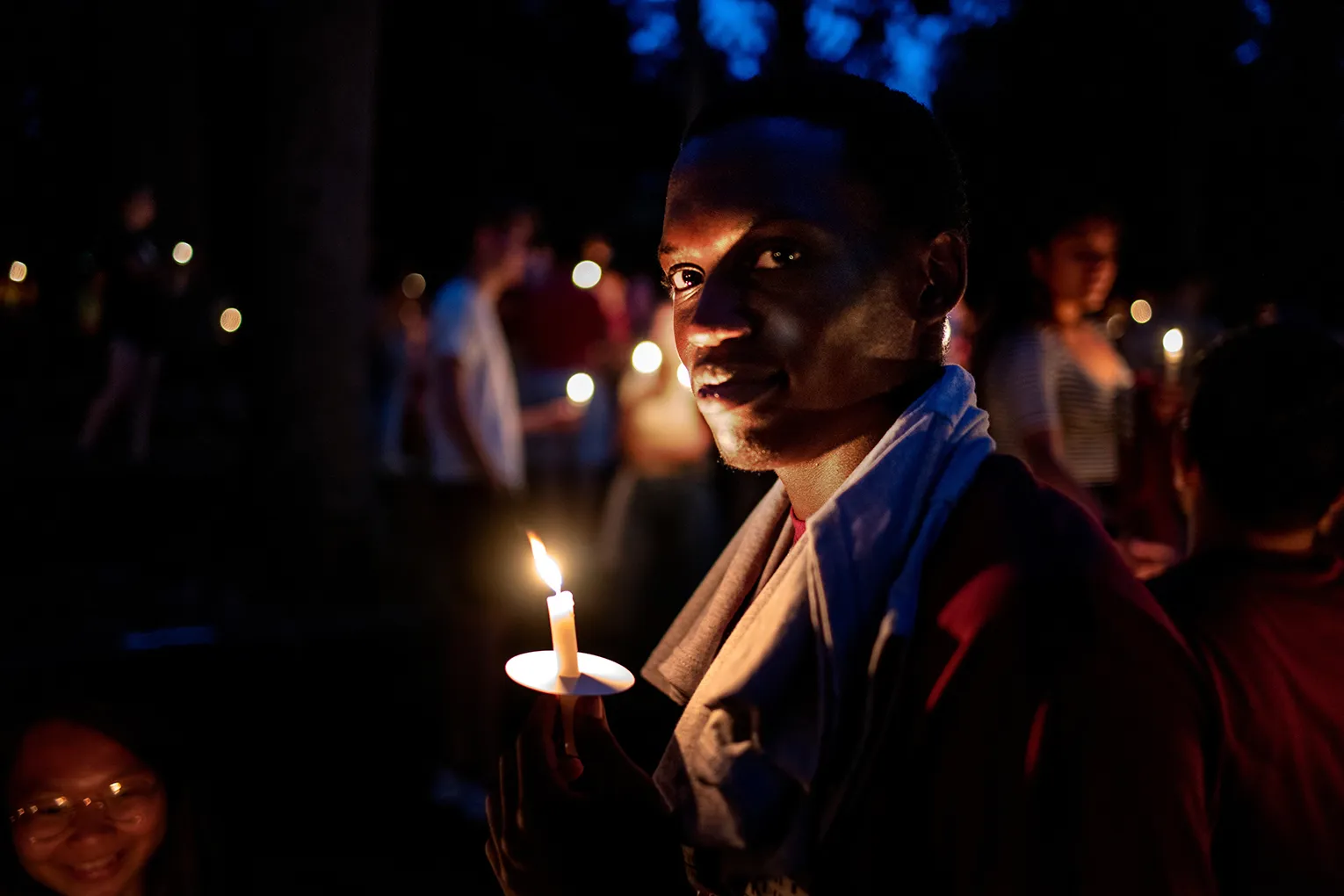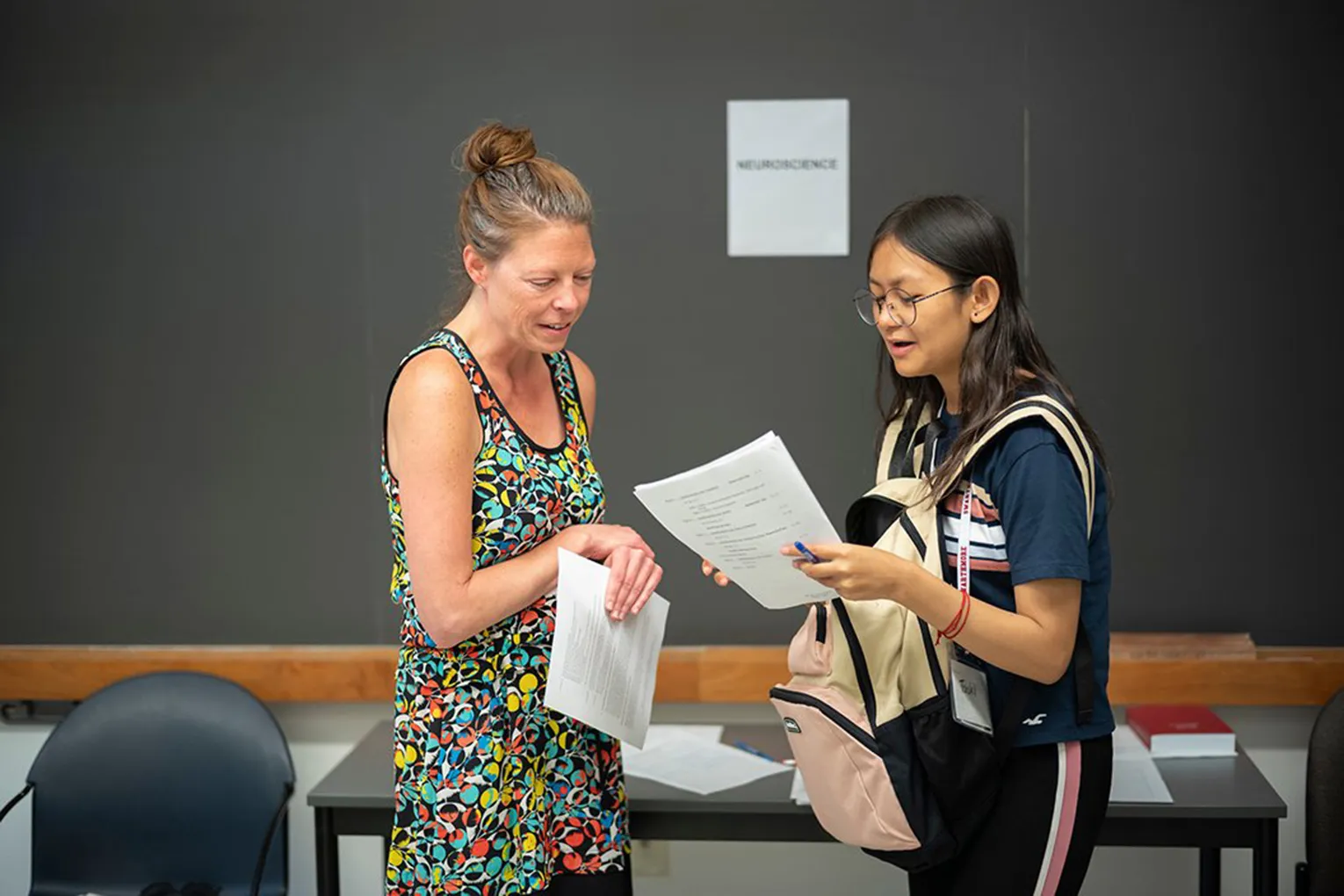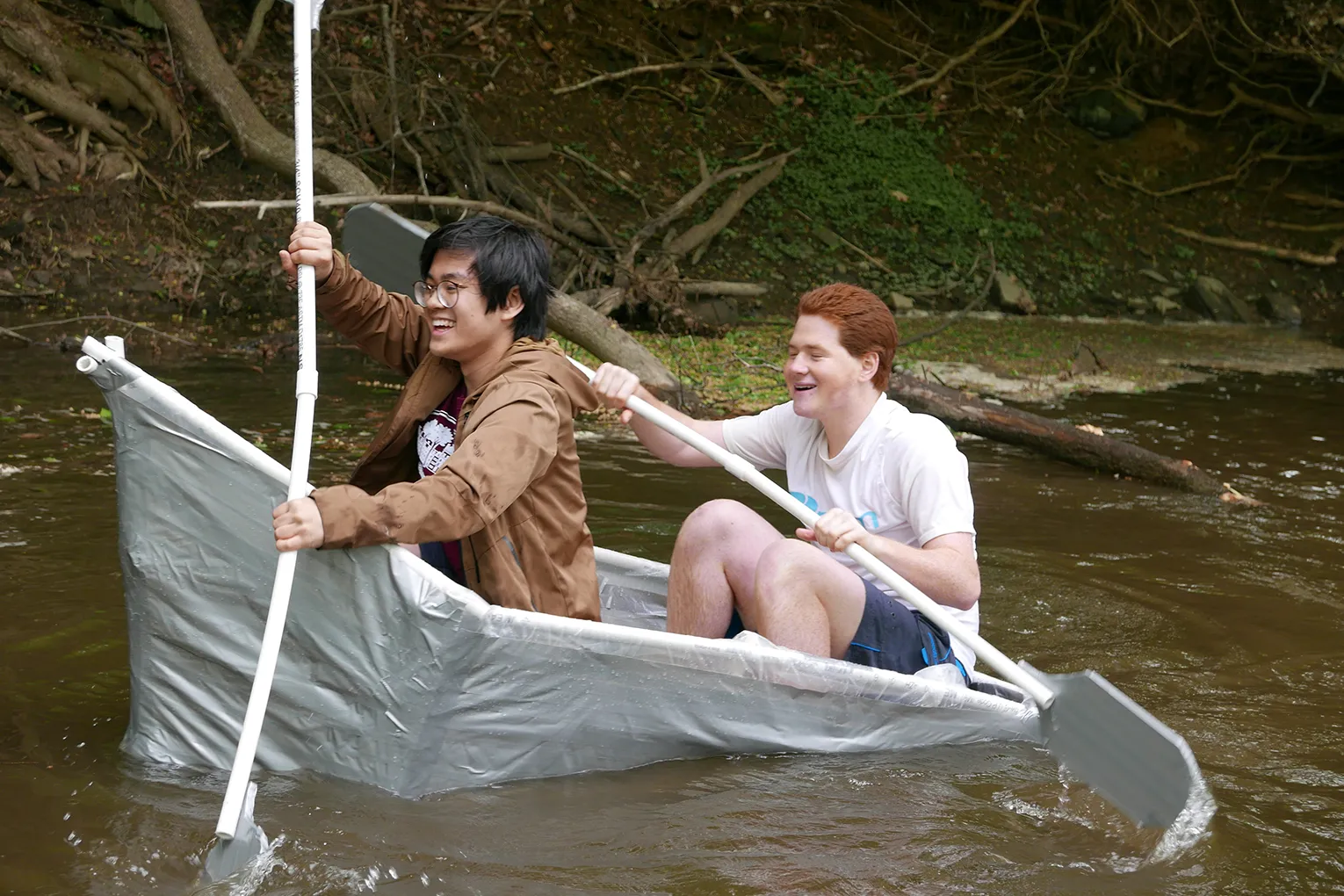Protecting the Campus Community
Dear Swarthmore Community Members,
Early this morning, I made the terribly difficult decision to seek assistance from the Swarthmore Borough Police Department to bring to an end a four-day encampment on campus. Below, I explain in detail the actions that forced us to take this extraordinary measure and the resulting consequences.
Let me begin by acknowledging what I expect will be a wide range of reactions to this news. You'll likely hear varying accounts of what occurred, some more accurate than others, and see videos and images of police on campus. Many will find this upsetting, if not devastating. I know some will feel sadness or even anger toward the College, and others will feel a sense of relief. Whatever your response, I hope you understand that my sole interest in making this decision was the safety and security of our campus community. I did so only after exhausting every other reasonable avenue to bring the encampment to a quick and peaceful conclusion.
For those of you who are unaware of all that led to this moment: On Wednesday, members of Swarthmore Students for Justice in Palestine (SJP), a suspended student organization, and other protestors erected an encampment on Trotter Lawn. They quickly and repeatedly used social media to invite people from outside of the campus community to join them, and soon afterwards unknown individuals began to arrive on campus.
Many, if not all, of the protestors — both students and non-students — were fully masked and tried to remain unidentifiable. College staff members went to the encampment more than once to ask for identification. None of the individuals complied. We informed the protestors multiple times, both verbally and in writing, that their actions not only violated several College policies, but also jeopardized the safety and security of the broader campus community — especially those who are most vulnerable in the current political context. We instructed them to end the encampment immediately or risk being placed on interim suspension.
The encampment persisted, and on Thursday staff members recovered College property that protestors had taken to erect a barricade around their tents. At that point, we discovered that some of the property had been vandalized. For instance, the Big Chair was covered with graffiti containing abhorrent statements celebrating violence and promoting hate. As I wrote in a message to campus, their actions were appalling, and I unequivocally condemned them.
We tried talking with the protestors, but they refused to engage in any substantive conversation about ending the encampment. SJP continued to use social media to urge individuals from beyond Swarthmore to come to campus. In addition to placing the community at risk, the promotion of the protest on social media drew the attention of law enforcement agencies, including the FBI, who urged us to bring the encampment to an end as quickly as possible.
On Thursday, we began issuing interim suspensions to student protestors who were positively identified, ultimately resulting in seven such suspensions. We hoped that these sanctions would motivate those involved to change course. Unfortunately, that wasn’t the case. We received word from local law enforcement agencies that more individuals from Philadelphia and surrounding areas were making their way to campus to join the protest. Soon after, it was clear that the number of individuals from outside our community surpassed the number of students at the encampment. As you can imagine, that situation only exacerbated our concerns.
We issued trespass notices to all individuals at the encampment, again instructing them to leave the area and clearly stating that failure to do so would lead to criminal trespassing charges. We posted signs as well, but those signs were vandalized within minutes.
As all of this was unfolding, we heard increasing concerns from parents, some members of the faculty and staff, and other students — including non-U.S. citizens — who were worried about the ramifications of the encampment.
After I consulted with faculty and members of the senior administration, yesterday we informed student protestors that the encampment needed to come to an end by 1 a.m. today. We were also clear that failure to disperse would result in additional sanctions, including possible expulsion, and could lead to arrests for trespassing. Again, our efforts were unsuccessful. Late last night, after several hours of conversations with some faculty who were trying to resolve the situation, members of Swarthmore SJP posted a defiant message on social media that made clear their intent to remain in the encampment.
With rising concerns about safety and security on campus, a continued and growing presence of individuals unaffiliated with the College, warnings from outside law enforcement agencies, and no signs that protestors were willing to engage in conversation that would bring the encampment to an end, I felt we had no choice but to seek outside assistance from local law enforcement.
This morning, approximately 25 police officers, led by Borough police and including others from area police departments for additional support, arrived on campus to remove the protestors and clear the encampment. We have a strong relationship with the Borough police chief and other members of the department, who have a deep appreciation for the College. Throughout today’s events, they all worked in close partnership with our Department of Public Safety.
Upon arrival, Swarthmore staff members gave a detailed account of what an arrest would mean, and urged everyone involved to leave on their own. The Borough police chief then told protestors to disperse or face arrest. While several followed that advice, others chose to ignore the warnings. Police then arrested nine individuals. No one at the encampment was injured.
The majority of them are not members of the College community. However, one current student and one former student were among those arrested. They all face misdemeanor trespassing charges. After they are processed by the police, they will be released on their own accord. In addition, both individuals affiliated with the College will be placed on immediate interim suspension and will not be permitted to return to campus until the conclusion of a student conduct process.
The significance and gravity of today’s events are not lost on me. I know that the decision to call local law enforcement to campus will raise difficult questions and serious criticism. Some will believe we acted too quickly and too forcefully; others will feel just as strongly that we waited too long to intervene. These divergent views reflect the complexity of a situation in which every path forward was fraught. Ultimately, I carry the responsibility of ensuring the safety and security of our entire community, and I acted with that interest in mind.
As painful as this moment is, I hope it can also serve as an inflection point — a chance to return to the principles that have long defined our community. We can choose to engage across our differences with openness and curiosity, to challenge one another’s assumptions with both conviction and respect, and to lead with care and compassion, even in the most trying times. In doing so, we can build upon what binds us together, and foster a more resilient and inclusive future.
Sincerely,
Val Smith
President



